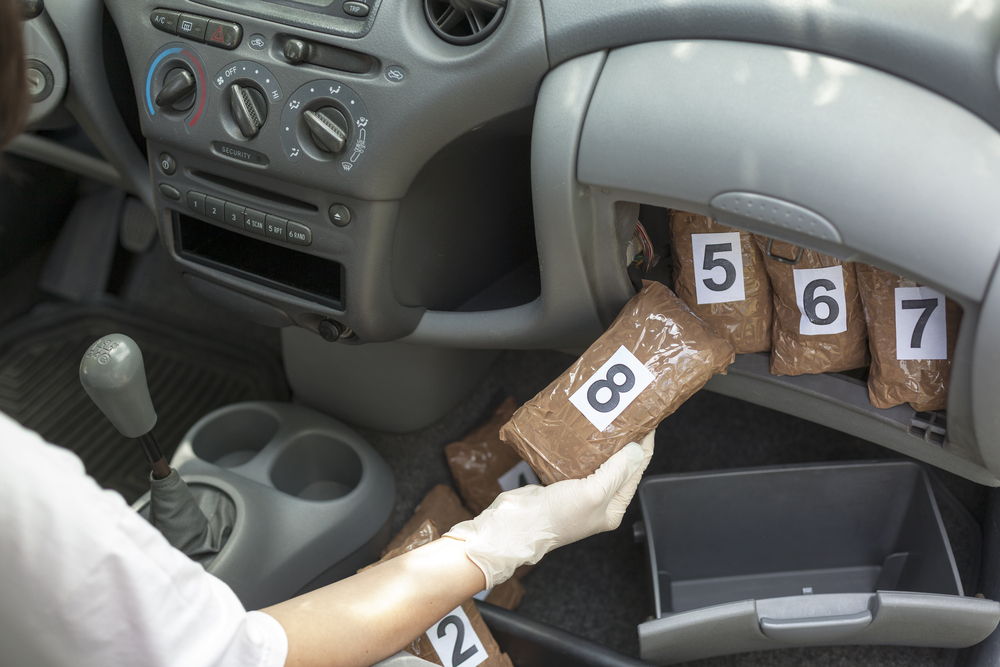Share This Article
The Case of R v Amanatidis [2001] NSWCCA 400
Michael Amanatidis was charged with supplying prohibited drugs (Heroin) under section 29 of the Drug Misuse and Trafficking Act 1985. He was found guilty, and convicted in the District Court. That conviction was successfully appealed when he was eventually found to be not guilty.
The law assumes you have a drug in your possession for the purposes of supplying where the heroin weighs 3 grams or more. This is called deemed supply.
The Issue in this Case
The only issue in this case was whether Michael had “possession” of the Heroin found by police.
For Michael to truly be guilty of drug possession or drug supply here, the police must prove that Michael:
- Knowingly had physical custody or control of it, to the exclusion of others.
The law says, you are not guilty of possessing drugs if you didn’t know the drug was there.
In circumstances where there is no evidence of physical possession of the drugs on you (as in Michael’s case), you will be found not guilty if there is a reasonable explanation consistent with your innocence.
The reasonable explanation consistent with innocence argued successfully here is, that Michael didn’t have knowledge of the Heroin in the car. This is because it was his daughter’s Heroin, who had exclusive control over it to the exclusion of others.
The facts of this case
The Heroin was found by police in a Longbeach Cigarette packet, which was located underneath the driver seat of a car parked outside. The car was owned by Michael’s mother, but was also used by himself, and his daughter.
Before searching the locked car, police searched Michael and found a packet of Longbeach cigarettes, a foil with 2.5 grams of heroin, further 0.9 grams of heroin on him, and keys to the car that was later searched.
Police then used the car keys, found on him, to search the car. They found 9 grams of heroin (with a purity of 73.5%) which was found inside a Longbeach cigarette packet located underneath the driver seat.
Michael immediately denied all knowledge of the packet and the heroin contained within it. At the time of the search, he even denied driving his car to the location it was parked.
During the search of the car, police also found the following:
- A passport and building society passbook in his daughter’s name, and a family Medicare card found in the glove-box.
- Men’s and Women’s clothing found in the boot.
At the time of the police searching the boot, Michael said to police, “be careful with that, that’s my daughter’s, she might have a syringe in her shirt”.
Although Michael had a right to silence, and refuse an interview to police, he decided to voluntarily give an interview to police. In the interview, Michael told police:
- He drove the car to the spot it was later searched by police
- The car is owned by his mother
- The only people who drive the car include himself, his daughter and his mother
- His daughter drove his car the previous night
- In response to the question of who owned the heroin, he said, “no comment”
- In response to the question if he could explain why the drug was in his car, he said, “I haven’t got a clue”
- He told police he was a heroin addict
- His daughter’s choice of regular cigarette brand was Longbeach
During the trial, the evidence revealed the following:
- A spare key to the car was at his house where it was available for use by his daughter
- His daughter drove the car on occasions, including the previous night
- His daughter had been convicted of possessing heroin in the past, and another offence relating to drugs
The Result
Proof of heroin found in the car is not enough to prove, beyond reasonable doubt, that he had knowledge of the custody or control of it, to the exclusion of others (“possession”).
On appeal, the Court found that Michael was not guilty to the drug charge because:
- The court could not find, beyond reasonable doubt, that Michael had knowledge of the existence of the heroin under the driver seat of the car. The Court ultimately found a reasonable explanation consistent with him not having knowledge of the existence of the Heroin in the car based on:
- Michael’s denial of knowledge of the heroin found
- His daughter’s involvement in drug abuse
- His daughter’s use of Michael’s car inferred from what he told police, and the items found in the car by police
This all raised a reasonable possibility that the Heroin was his daughter’s (who exercised exclusive possession). This provided a reasonable explanation it was in the car without his knowledge.
Drug Possession Charges
You can only be guilty of drug possession in NSW if police prove each of the following elements:
- Proof that the substance found was actually a recognised prohibited drug; and
- You had the physical custody or control of the substance found, to the exclusion of others; and
- You at least believed there was a real chance that the substance containing the drug was where it was found; and
- You at least believed there was a real chance that the substance found was a narcotic drug
The court can actually draw an inference that you had knowledge of these things based on the surrounding circumstances established from the evidence. For example, where drugs are found in your wallet located in your pocket, establishes a strong inference that you had knowledge of its existence there.
That inference can, off-course, be displaced by producing evidence suggesting that you didn’t know.
The case of R v Dunn (1986) 32 A Crim R 203 at 205 says that the police don’t need to prove that you knew that the substance was any particular drug, only that you had knowledge that it was a drug.
Defence to Drug Possession Charges
See our page for more information on defences and FAQ’s for drug possession charges.
Put another way, you can’t be guilty of possessing drugs if any one of the following situations apply to you:
- The drug found by police was fake. This can be established from getting the police to produce a drug certificate after you are charged.
- You didn’t know the drug was at the location police found it in, or you didn’t believe there was a real chance that the drug was there or that it was a drug at all. Here, the court can look into the surrounding circumstances, in order to draw an inference about whether you believed there was a real chance that the drug was at the location found by police.
- Where you are charged with drug possession, the drug was found in a common area of a house that is accessible to the other occupants of the house. you will be not guilty where police fail to establish that any one of the other occupants didn’t have control or custody of the drug.
- Where you have such a minute quantity of the drug, that in the eyes of the law, it is not considered to be an offence. For example, where the drug was so minute, it was invisible to the naked eye.









